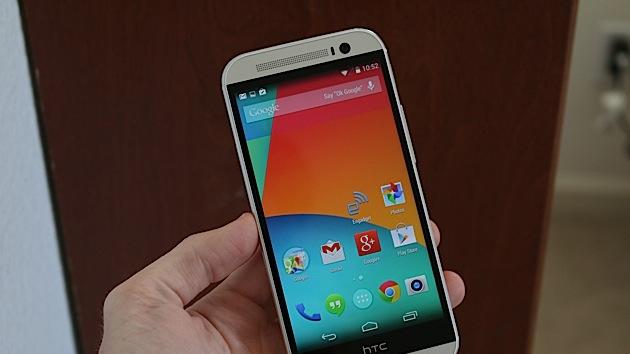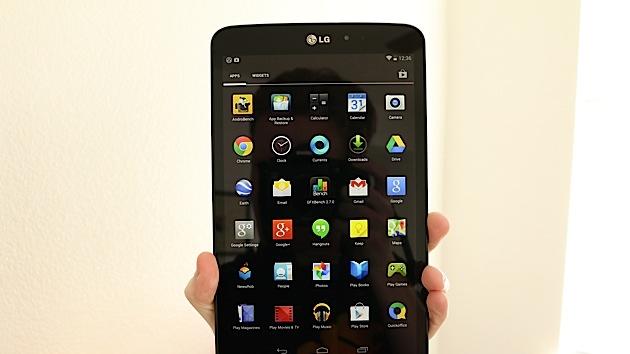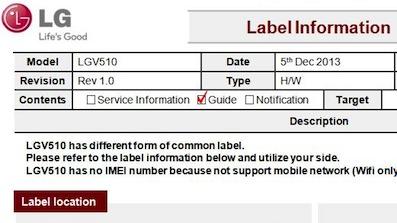gpe
Latest

The HTC One M8 has a Google Play edition, but how is it different? (hands-on)
HTC's latest flagship device, the One M8, is one of the best Android smartphones now available on the market, but what would happen to it if Google stripped the phone of some of its customizations? That's essentially what the Google Play edition of the new One offers. Plunk down $699 and you'll have access to an unlocked and (mostly) unadulterated version of the M8 with stock Android 4.4 (also known as KitKat). Of course, we've been curious to see what will happen to the features that make the new One unique. HTC told us that the Google Play edition will be able to take advantage of the Duo Camera, for instance, but does it still offer the same functionality? Additionally, can we use the Motion Launch gestures to wake up the phone and access different features? And how about that clever Dot View case that comes in so handy on the Sense version? Look no further for the answers.

Moto G Google Play edition hands-on (video)
If Google's strategy of releasing Play edition devices isn't working, the company is sure doing a good job of hiding that fact: In the space of a month the number of smartphones and tablets bestowed with that title has grown from two to five. None of these devices are brand-new; they're all existing devices created by popular Android manufacturers. The difference is that each one has been unlocked, stripped of custom firmware features/modifications and blessed with a stock version of the latest Android build. As a result, you get a Nexus-like experience on a wider variety of devices, and you typically receive updates much faster than any other Android gadget out there. Motorola's Moto G is the most recent device to be given this treatment, and at $180 (8GB) or $200 (16GB), it's the least expensive Google Play edition you can buy. We're the first to applaud the opportunity (and ability to choose) to use flagship devices without pre-installed bloatware, unnecessary features and user experience that's been dictated by the manufacturer. That said, we have to wonder if the Moto G really needs to be turned into a Google Play edition -- after all, the GSM version of the smartphone already comes unlocked, uses a mostly stock Android UI, is void of needless bloatware and has only a few additional software features like Moto Assist, Migrate and a different camera interface. It even got an update to Android 4.4 KitKat shortly after the device's launch. How exactly does the Google Play edition differ from the original, and which one is the better choice? We just got our hands on the new version of the Moto G, so keep reading to find out.

Moto G Google Play edition now available for $180
The Moto G now has an official Google Play Edition. The device, which just popped up on the Google Play Store, is available for $180 (8GB) or $200 (16GB). Just like we've seen on other Google Play edition devices, the Moto G will offer the same specs as the GSM version along with a stock version of Android 4.4 KitKat. It'll be compatible with AT&T and T-Mobile here in the US, although it doesn't appear to offer AWS support for T-Mobile's HSPA+ network. We're still waiting to hear details about its availability in other parts of the world. Head to the source link to grab one of your very own.

LG G Pad 8.3 Google Play edition hands-on
If you've been eyeing the LG G Pad 8.3, your decision just became more difficult. Yesterday Google announced -- and began shipping -- a Google Play edition of the tablet for $350 in the US, which makes it the very first slate to receive the stock Android treatment. What does this mean, exactly? Google Play editions come with Android 4.4 KitKat without any manufacturer or carrier customizations, so it looks precisely the way Google intends it. This can be good or bad, because there are a couple tradeoffs you need to consider: The good news is that these types of devices typically get upgrades to the newest version of Android far earlier than the vast majority of smartphones and tablets, but you also need to give up a few features that were unique to their skinned counterparts. In the case of the G Pad 8.3, this means you won't be able to enjoy the Knock On (aka, "double-knock") feature, nor will you have Slide Aside or access to a litany of LG's Q-branded functions like QPair, QRemote or QSlide. None of these missing services are crucial to the functionality of the G Pad, although we must admit that we've grown rather fond of Knock On. The camera interface is also quite different, but the only thing that might frustrate you is the lack of manual settings; if you only rely on automatic mode to make the photo magic for you, this likely won't be an issue of concern. Just like we saw on the Z Ultra Google Play edition, the G Pad also doesn't come with the native Android gallery app, as it appears that the Google+ Photos app has taken its place as the default. You'll also have the stock camera UI to deal with, rather than LG's, so you won't be able to make many manual adjustments. Of course, this probably isn't a huge concern for a lot of tablet users who may only use their camera for basic needs. Aside from software changes, you're not going to see anything different on the outside. The dimensions are all the same as the original model, as are the actual hardware components. It's only available in black (the back strip is fitted with brushed metal, with black plastic ends), but it's offered for the same price as the model we reviewed last month. We've got a bunch of images for you to behold below.

Sony Z Ultra Google Play edition hands-on
Sony's gargantuan phone, the 6.4-inch Xperia Z Ultra, is finally getting some quality time in the United States, but not exactly the same way we had envisioned at first. For $650, you can now grab a Google Play edition of the device (in the US, anyway), which is compatible with AT&T's and T-Mobile's LTE and HSPA+ networks. Essentially, this means that the unlocked phone features a stock version of Android 4.4, is free of Sony's software tweaks and carrier bloatware and it'll (in theory) get updated to the latest and greatest version of Android sooner than most other devices. Since the Z Ultra (no Xperia branding this time) doesn't come with Sony's user experience, this means that it's missing some features you normally find on flagship Xperia devices, such as the Bravia Engine. You'll get a stock camera UI, rather than Sony's proprietary interface, which means you won't have access to as many manual settings as you'd probably prefer; that said, at least it comes with a standard HDR setting, so its software algorithms may be a little different from Sony's, and may affect the final image somewhat. Also gone is the native Android gallery that we've grown to love or hate over the years, and in its place is the new Google+ Photos app that was introduced in Android 4.4 KitKat and featured on Nexus devices. Aside from these differences, there isn't much else to the experience; the look, feel and dimensions of the device are all the same, so if you thought the original Z Ultra was too big (and too expensive) for your tastes, there's nothing about this new edition that will change your mind. Still, this is the best option for anyone who wants an official stock Android experience on such a large handset (without venturing into loading ROMs, at least), so perhaps a handful of you may be looking at the Z Ultra in a completely new way now. Either way, we've got some pictures below for your viewing pleasure. Update: Sony has confirmed that the Google Play edition does indeed have Bravia Engine. Update 2: Unfortunately, the Z Ultra came with a few nasty bugs, such as the inability to uninstall apps or access the security settings menu to enable sideloading. These bugs are getting fixed in the update to Android 4.4.2.

LG working on Google Play edition of the G Pad 8.3
When HTC and Samsung both came out with vanilla Android versions (referred to as Google Play editions) of their flagship smartphones this summer, we were excited because this meant that some of our favorite devices would now come with a "Nexus-like" option. Things got a bit quiet after that, but six months later, it appears that LG is busy preparing its first Google Play edition device: the G Pad 8.3. LG's confirmed the existence of the tablet on its own website after releasing KitKat open source files for the LG-V510; when you download the ZIP, you'll be greeted with references to the Google Play edition of the 8.3. This still doesn't guarantee that it'll actually be released, but it appears that the company's getting pretty close to doing so -- and as luck would have it, a rather large consumer electronics event is taking place early next month, and what better place is there to show off the first Google Play edition tablet?

The birth of open-source software for your mobile
Ever wonder what the world would be like with open-source software being at the center of all the coolest handsets, from slimphones to semi-smartphones? Although we'll bet Symbian, ACCESS and Microsoft would love to keep their own mobile operating systems to themselves in a way, there may be a glimmer of hope on the horizon for open-source to make its way to mobile of all shapes, sizes and prices. That new software stack in a slick new Sony Ericsson or Samsung handset could one day be drive by a completely open OSS platform under auspices of the Linux GPE project, known as GPE Phone Edition. This marvel will be an open source project with specialties built-in for the mobile operating system environment. The question is -- will manufacturers take a second (and third) look? It looks like fans can try a fully-functional version of this in-process OS using a virtual phone environment on your PC.